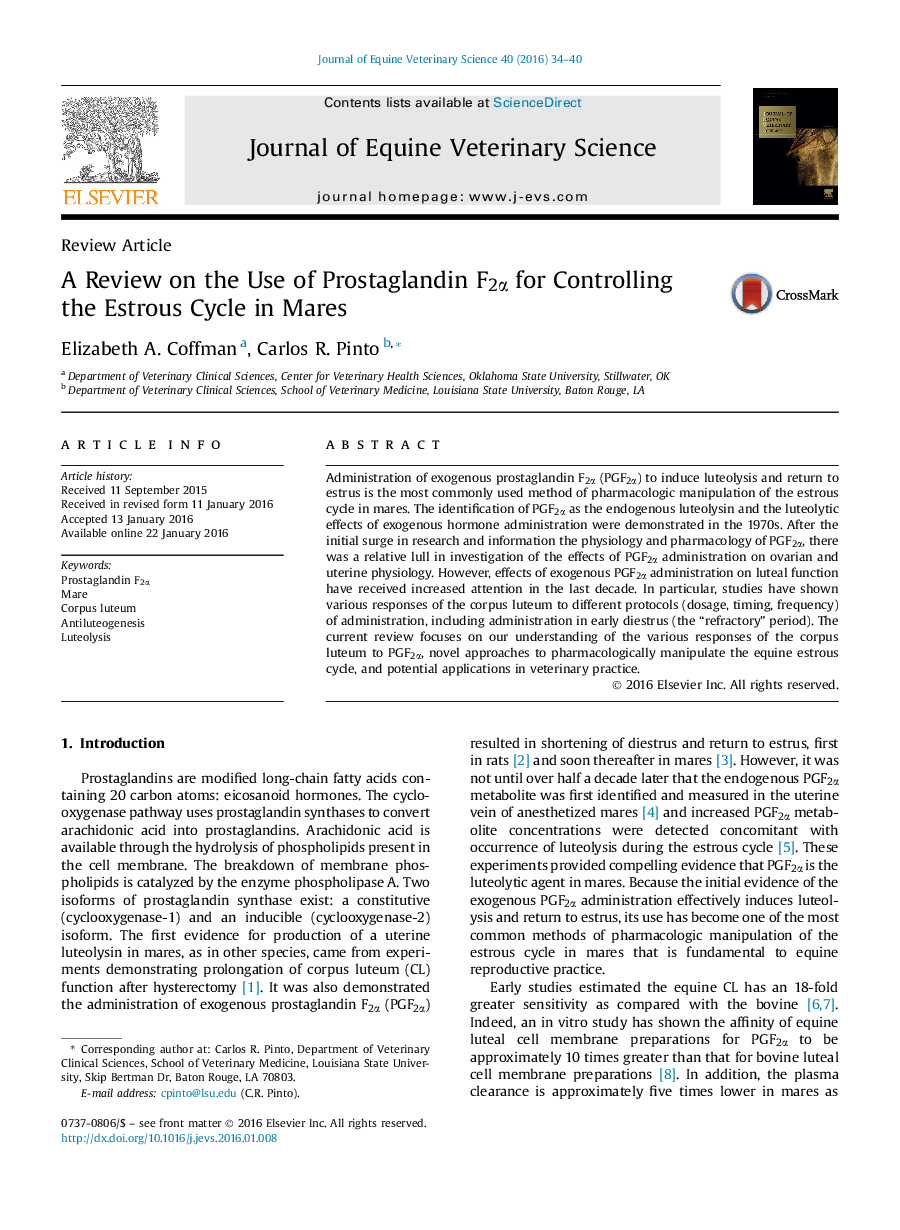| Article ID | Journal | Published Year | Pages | File Type |
|---|---|---|---|---|
| 2394544 | Journal of Equine Veterinary Science | 2016 | 7 Pages |
•One dose of prostaglandin F2α (PGF2α) reliably induces luteolysis only when administered after day 5.•Administration of PGF2α induces luteolysis and shortens the interovulatory interval.•Prostaglandin F2α in early diestrus may induce luteolysis, resurgence, or antiluteogenesis.•Cycles after PGF2α administration have normal follicle dynamics and corpus luteum function.
Administration of exogenous prostaglandin F2α (PGF2α) to induce luteolysis and return to estrus is the most commonly used method of pharmacologic manipulation of the estrous cycle in mares. The identification of PGF2α as the endogenous luteolysin and the luteolytic effects of exogenous hormone administration were demonstrated in the 1970s. After the initial surge in research and information the physiology and pharmacology of PGF2α, there was a relative lull in investigation of the effects of PGF2α administration on ovarian and uterine physiology. However, effects of exogenous PGF2α administration on luteal function have received increased attention in the last decade. In particular, studies have shown various responses of the corpus luteum to different protocols (dosage, timing, frequency) of administration, including administration in early diestrus (the “refractory” period). The current review focuses on our understanding of the various responses of the corpus luteum to PGF2α, novel approaches to pharmacologically manipulate the equine estrous cycle, and potential applications in veterinary practice.
